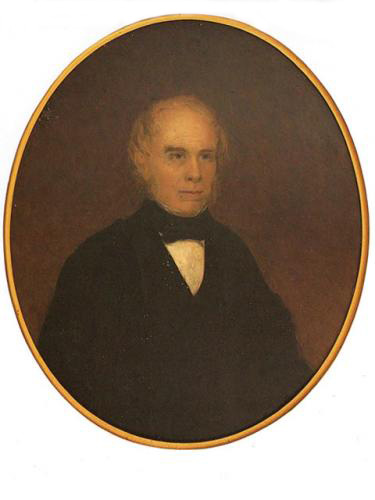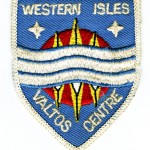Category: Entertainments
The Valtos Centre Badge
An Ceistear: Darkness in Uig
Walks in Uig
Leabhar na Beatha
Bonfire Night
RAF Party Stuck at Achmore
Gala Day 2010
Wartime Enaclete
The Airigh Trail, again
William MacGillivray in Uig

The renowned naturalist William MacGillivray was born in Aberdeen in 1796 and studied and worked most of his life there or in Edinburgh, but he had a Harris connection through his father and spent much of his childhood at Northton in South Harris (where the MacGillivray Centre now bears his name). As a young man, he returned to spend 1817-1818 there, and his diaries of that period have been published as A Hebridean Naturalist’s Journal (Acair 1996). In October of 1817 he and a party of friends and relations made a journey to Uig.
Luachar, Saturday, 18th October.
Let me describe the scenery, shooting grounds, house and its inhabitants. The scenery is generally of the grand order with little or no beauty. We have a long series of lofty mountains, turning into ridges & forming deep glens. These mountains are all rugged & precipitous, they run north-east and south-west. Stretching toward the north from them are low hills and extensive plains several miles in length and toward the south higher hills & vallies. On the declivities and under the rocks are the haunts of the deer, not easily found by a stranger, but well known to the inhabitants. Loch Rezort terminates the ground of sport on the north, the ocean on the west and south, and the Lewes on the east. The whole ground is broken into little eminences & depressions, covered with heath and some other plants – at this season of the year of a yellowish or brown colour, which renders it extremely difficult to see the deer – though the broken nature of the surface facilitates an approach to them when discovered.
The house, our place of rendezvous, is situated at the distance of between one and four miles from the places of resort of the deer, at the head of an arm of the sea which constitutes part of the northern boundary of Harris. It is what in the Hebrides is denominated a black house and what Dr Johnson calls a hut. Its inhabitants are Ewen McDiarmid, a shepherd in the employment of a gentleman of Kintail who has a very extensive tract in Harris under sheep, a tough, unpolished, but honest and civil man advanced in years; his wife Christina McCaskill, daughter of Mr McCaskill schoolmaster of Uig in Lewis, a genteel woman of about thirty; little John their son, a comical cross-grained boy; two female servants, the one a clumsy lump, the other a half-idiot with only one eye.
Luachar, Thursday, 30th October.
On Sunday, the 19th, Ewen and Miss Nelly and I and little John went to Toray, a small farm two miles down Loch Rezort on the Lewis side. One of our incitements to go there was to see two children of Ewen’s who were lodged there. Here we were treated with cream and potatoes. I made a very hearty repast. The vessels which held the cream were only two in number, so the good-man and the good-woman and Ewen were placed about one, while Miss Nelly and I got the other. Had any other arrangement been made, I had been disgusted, and I could not refuse to partake of their fare without being liable to the imputation of pride. We returned in the evening.
Hogmanay in the Capital, 1943
Wartime Wedding Telegrams
Banais Una
League Champions, 1978
The Uig Piper in Washington
The Uig Quiz
Kinloch…Somewhere, 23 February
FilmG Awards: Uig Winners
The Morsgail Meteorite: When Space Hits Back
no images were found
Further to the Daily Express cartoon about the alien cause of the disappearing loch at Morsgail, here’s a summary of the international coverage, from the Stornoway Gazette, 29 Dec 1959.
Few events in Lewis in recent years have aroused such worldwide interest as the “Morsgail Meteorite”. In addition to the planeload of British reporters, the Columbia Broadcasting system of America sent a team of cameramen to Uig to photograph the ‘hole’ for American TV, and we have received a cutting from the Bulaweyo Chronicle, which shows that Africa was equally interested.
From this Daily Express aerial photograph it can be seen that most of the damage was caused by water escaping from the upper loch, which was completely drained into the lower loch, about a quarter of a mile away and some fifty feet below.
But, even if we accept that most of the damage was caused by water, we have still to explain what set the water in motion in the first place. Three explanations have been offered.
The original one was that a meteorite had fallen, but it is difficult to sustain that in view of the fact that there is no well-defined crater – although a small meteor could have disappeared into the peat like a spoon of porridge.
The experts’ theory is that heavy rain was the sole cause. We certainly had heavy rain about the time of the incident, but it was not abnormal, and we have heard no reports of flood damage elsewhere in Uig, or even elsewhere elsewhere along the same watercourse as that from which the loch disappeared.
Again the ‘water only’ theory does not explain the smell of burning detected by the first witnesses, nor does it account for the fact that some small blocks of peat were thrown up on the bank rather higher than one would have expected if water were the sole cause.
The third explanation is that a flash of lightning caused a disturbance at the end of the upper loch, broke or weakened the bank, and set the water moving.


